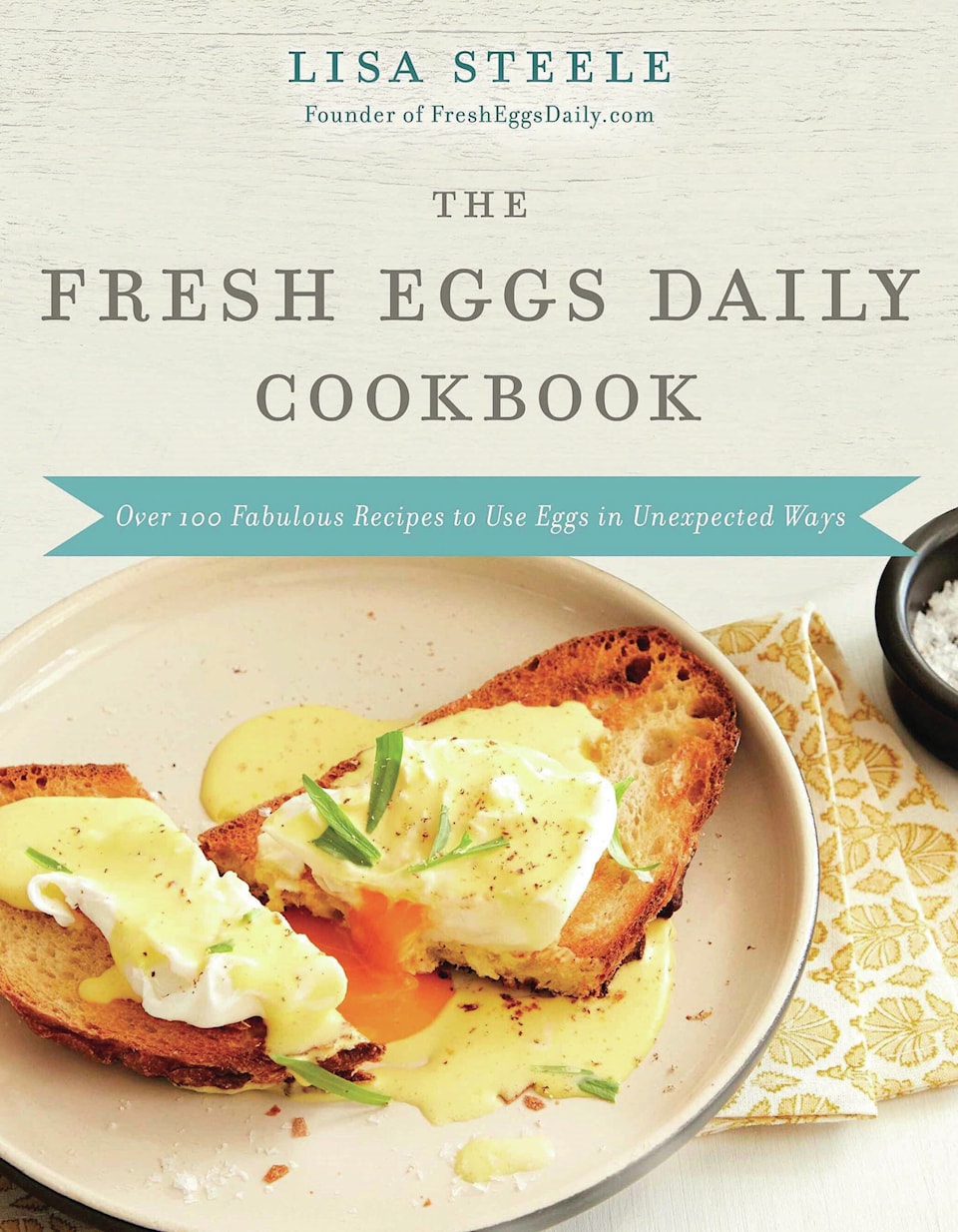NEW YORK (AP) — If you’re ever at the grocery store and wondering how old the eggs really are in the dairy section, Lisa Steele has a trick. Look for the secret number.
Printed on one end of each carton, you’ll find a three-digit number from 001 to 365, which represents the packaging date. The No. 001 refers to Jan. 1, while No. 365 stands for Dec. 31.
“It’s very sneaky how they do that because they really don’t want you to know how old the eggs are,” says Steele from her home in Maine, where she raises over a dozen chickens, 10 ducks and two geese. “I just envision people everywhere in grocery stores now checking out the egg carton code.”
From her popular blog Fresh Eggs Daily, Steele dispenses plenty of similar tips on egg handling and chicken raising. So this month she delivers a natural extension: a cookbook that showcases the adaptable egg, The Fresh Eggs Daily Cookbook, from Harper Horizon, an imprint of HarperCollins.
“I don’t know that there is someone else who raises chickens who has written an egg cookbook,” Steele says. “I do have a different perspective and obviously a lot of eggs.”
The recipes include dishes ranging from breakfast to dessert, including Sweet Potato Sausage Frittata, Deviled Eggs with Avocado Oil and Sage, Bacon and Beet Hash, Egg Yolk Ravioli and Angel Food Cake — plus a Lime Bourbon Sour to wash them down.
Steele notes that the humble egg is very versatile and an inexpensive way to get protein while cutting down on eating red meat. It’s not just for breakfast.
“I think people get into a rut with the scrambled, fried, maybe hard boiled — you forget all the other things that you can do with eggs,” she says. “They’re almost like two ingredients because a yolk is completely different than the white. You can use them together. You can use them separately.”
Some of the more innovative recipes in the book include a Bacon and Egg Pizza with scallions and garlic that you can reheat for breakfast, and an Egg Lemon Soup, which uses chicken stock and rice.
“A fresh egg from a chicken that has been eating bugs and weeds and things just tastes really good on its own,” she says. “But it’s also super neutral, so you can pair it with different spices, or different herbs or different cheeses and come up with a completely different meal.”
Steele thanks her husband in the acknowledgments for “eating way too many eggs on demand” during testing. While perfecting her mini soufflés, she once made 18 in a day until she was happy with the recipe. “The chickens ate a lot of soufflé that day because they got all the disasters,” she says.
Freshness matters, since egg whites thin out as an egg ages, making poaching and frying harder. But eggs are also resilient: Refrigerated eggs can remain good to eat with little reduction in nutritional value for three to four months or longer. In addition to the secret number on the carton, there are two other good tests for freshness: If you shake an egg and the insides slosh around, it’s old. And a fresh egg will sink to the bottom of a glass of water.
Steele also guides readers through the maze of categories that egg manufacturers use on their cartons, like “cage-free,” “pasture-raised,” “organic” and “hormone-free.” (Ignore ”all-natural” as a marketing ploy, while “hormone-free” and “antibiotic-free” are basically meaningless, she says).
“Honestly, I think everybody should raise their own chickens. But, short of that, finding a farmers’ market or a local farm or a neighbor or someone who raises chickens is your next best bet,” she says.
